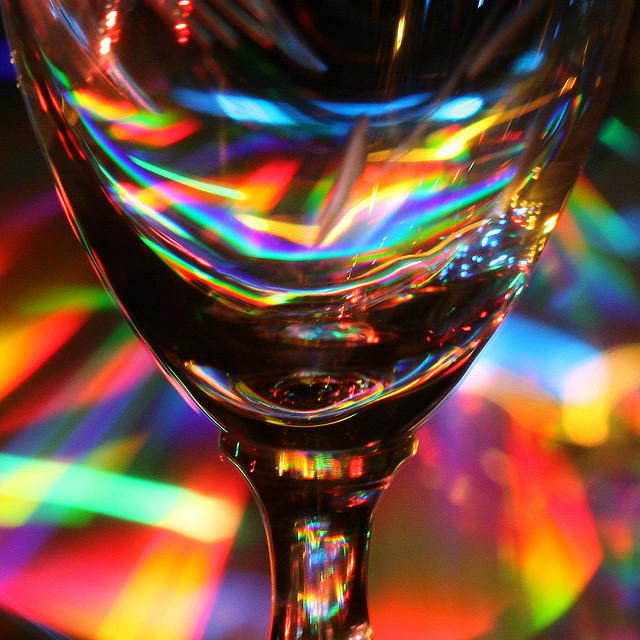FWP:
SETS
JALVAH: {7,4}
WINE: {49,1}
Nazm to the contrary, the imagery of this verse seems more straightforward than that of the previous one, {49,7}. In that one, after all, the wave of wine not only became blood and flowed in veins, but then instantly also became a kind of bird, with feather and wing. In this one, the wave of wine simply becomes a wave of rose, and a light for the path of thought-- images that are more abstract and less mutually contradictory, and thus easier to imagine.
The wave of (red) wine is radiant like a lamp, and thus can be a wave of 'rose'-colored brilliance-- 'in' the imagination, of course. The imagination is here seen (or imagined?) as a space that things can be 'in', a realm that can have both pathways and lamps to illumine them. Thus the imagination can indeed be a space that is lighted by the rosy brilliance of the wave of wine, which provides a kind of decorative lamp-display; for more on chiraa;Gaa;N see {5,5}.
A lamp-display is also a compelling image for the imagination.
For while a single lamp lights the path, and thus helps the traveler, a whole
decorative lamp-display is so eye-catching and dazzling that it may well cause the
traveler to pause and admire, rather than moving onward in the real world.

Nazm:
In this verse he has first used for 'wave of wine' the simile of 'wave of rose', then the simile of lamps, and by means of the affinity with lights he has constructed 'thought' as a 'pathway'. That is, what's the thought of the wave of wine? It's a wave of rose. What's a wave of rose? It's a path, in the imagination, of lights. It's obvious that if one uses a lamp as a simile for a wave of rose, then there's no cause of similitude. No doubt, if one uses a wave of rose as a simile for a wave of wine, then the cause of similitude, color, is present in both. And the simile of lamps for a wave of rose is perfect. That is, the radiance of every single rose is compared to the flame of a lamp.
The result is that if a wave of rose is likened to lamps, and a wave of wine is likened to a wave of rose, then from the imagining of a wave of wine, the pathway of thought is lamp-lit. [Similes can legitimately be used in this transitive way, but] the condition is the oneness of the cause of similitude. Here, that is not found. That is, in the wave of wine and the wave of rose the cause of similitude is simple, and in the wave of rose and the lamps the cause of similitude is superimposed. (46)
== Nazm page 46